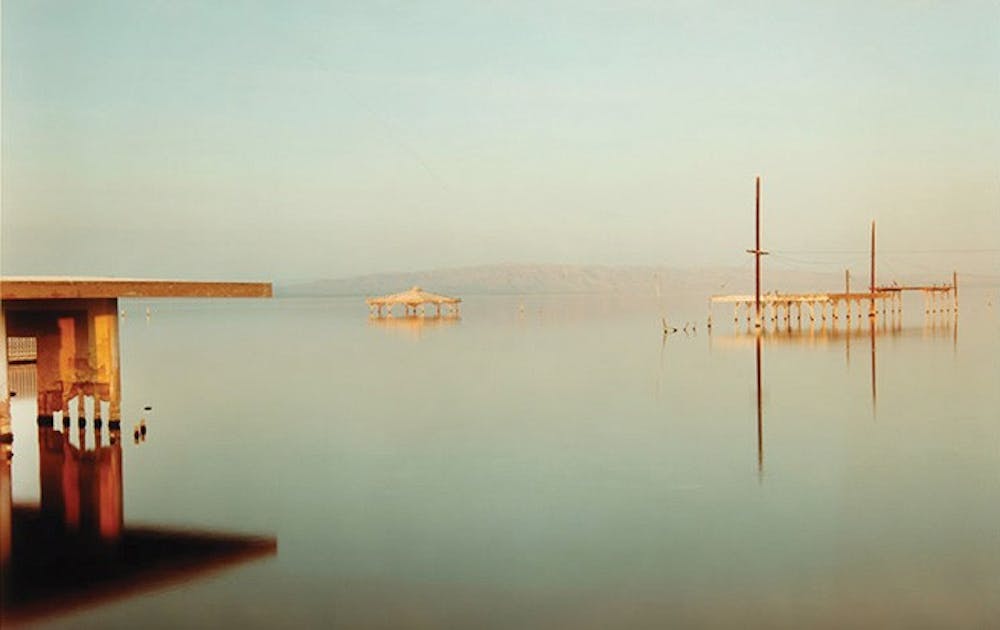Real. Objective. Scientific. These are among the myriad of words that have become associated with photography. However, the Nasher Museum’s newest exhibition, Light Sensitive: Photographic Works from North Carolina Collections, dispels the myth of photographic realism.
Opening this Thursday and running through May 12, Light Sensitive, which is co-curated by Patricia Leighten, Professor of Art History & Visual Studies at Duke, and Sarah Schroth, Nancy Hanks Senior Curator at the Nasher Museum, consists of over 100 photographic works, ranging from antique daguerreotypes to modern digitals. Among the pieces, viewers will find the iconic works of Sally Mann and Andy Warhol, as well as pieces by Duke’s own Margaret Sartor, Visiting Lecturer at the Center for Documentary Studies.
Despite the wide range of works, the exhibition maintains a specific focus: showing that the camera is not, and has never been, an “innocent eye” capable of replicating the world exactly as it is. The curators hope that viewers will become aware that photographs are not pieces of evidence or records of reality, but rather, are carefully crafted artworks.
“I hope that they will see the power that photographers have to exaggerate aspects of photographic technique in order to shape viewers’ responses to their subjects,” says Leighten.
The exhibition is split into five sections, each of which explores the ways photographers are “pushing the medium,” says Leighten. Specifically, the sections include “Light Magic,” “Intensified Vision,” “Metamorphosis,” “Emulation” and “Identities Constructed.”
Viewers will first encounter “Light Magic,” which demonstrates how photographers can creatively play with light in their images. Specifically, these photographers use sharp contrasts, long exposures, reverse negative prints and other methods to manipulate lighting. In many instances, such as in Vera Lutter’s Fulton Ferry Landing, Brooklyn, the result is an image that does not remotely resemble reality.
“Light is the easiest way to see how photographers can exaggerate,” says Leighten, commenting on why the section appears first.
Next, “Intensified Vision” calls attention to other methods that photographers employ while crafting their images. These techniques include but are not limited to focus, depth of field and “angle of vision.” For example, in This Sporting Life, Larry Fink makes a praying mantis appear larger than life by shooting it with a shallow depth of field while reclining on the dirt.
“Metamorphosis” most challenges the notion of photographic realism, as it includes pieces in which artists have painted over photographs, fused multiple negatives or carefully staged scenes. A notable standout is Anthony Goicolea’s Guardian, which presents multiple negatives of dogs amidst a snowy winter wonderland.
“Emulations” explores the long-standing relationship between photography and other media. One piece that comically addresses this relationship is Robert Minick’s Women at Inspiration Point, Yosemite, in which a woman looks at Yosemite Falls while wearing a tourist scarf containing a painting of the Falls.
Lastly, “Constructed Identities” focuses on portraiture to illustrate how photographers create specific identities for their subjects and reveal, in Leighten’s words, “the social circumstances that shape identity.” Images of children, such as Raymond Meeks’s Abby, Jake, Jocko Valley Montana, are especially prominent in this section.
However, aside from these five sub-themes, Light Sensitive also has an additional storyline running through it: the narrative of a lively community of North Carolina photography collectors. While the exhibition covers a wide range of photographs that spans the historical and geographic spectrum, they all come from one of twelve public or private NC collections.
“It is a celebration of our local collections,” says Wendy Livingston, manager of marketing and communications for the Nasher. Frank Konhaus, who, together with his wife Ellen, supplied 14 works for the exhibition, attests that the celebration is warranted. Musing on the local art collector community, he recounted being “completely blown away by the wealth and depth of the collections that we have here in North Carolina.”
The curators’ decision to focus on NC collections was driven by their curiosity about what was being collected in the community. “It was an exploration of our region,” said Leighten.
Leighten and Schroth were not disappointed by what they found. Their exploration proved to be so fruitful that the pair is planning on mounting another related exhibition in a few years. This time, in the curatorial process, they only made it as far as Wilson, NC, and there are many more collectors that they still want to meet.
Past turnouts suggest that the public will not be disappointed either. “Almost every year we have had a photography show, and visitors just love it,” Livingston said.
Livingston offered high praise for the exhibition, explaining that it fits in with the Nasher’s educational mission and connects well to its permanent contemporary collection.
Konhaus also expressed great excitement about Light Sensitive: “It is expanding the notion of what photography is to a general audience, and that is exciting.”
“The show is about slowing down and looking,” said Livingston. “You can get really deep with it and ask what is real, what am I looking at, what is the truth, or you can breeze through and enjoy it. You can take it as far as you want.”
Light Sensitive will be on display at the Nasher Museum of Art until May 12.
Get The Chronicle straight to your inbox
Signup for our weekly newsletter. Cancel at any time.

